Work From Anywhere
Working from home predates the coronavirus crisis: the proportion of the US labor force working from home rose from nearly 4% during the financial crises to roughly 5.3% before the pandemic.
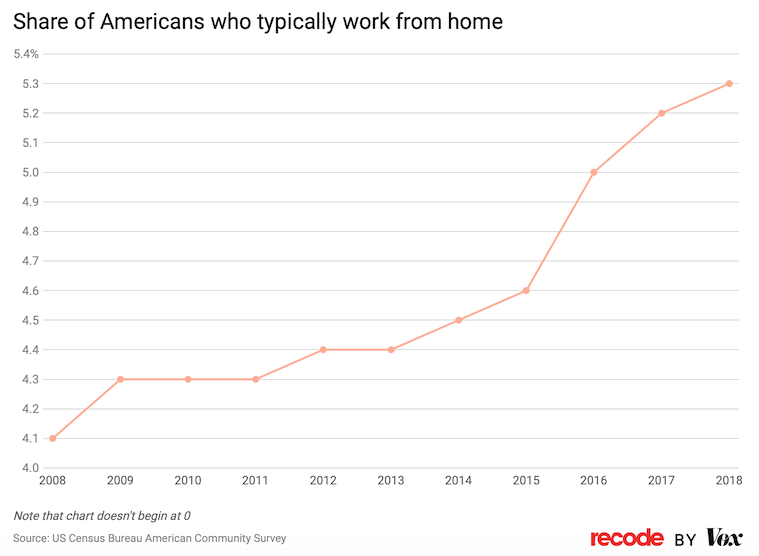
That trend has only accelerated…
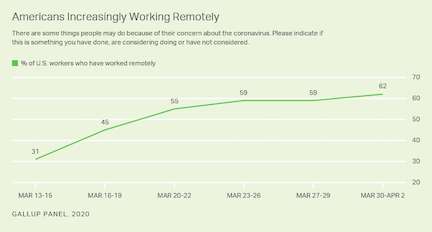
…depending on the job you have:
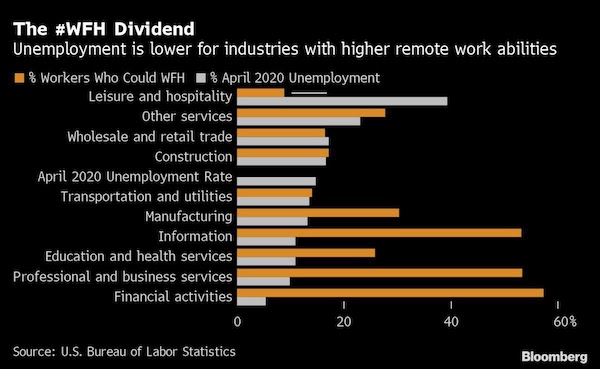
Workers really like it and would like to see it continue, though not necessarily in an either/or kind of way:
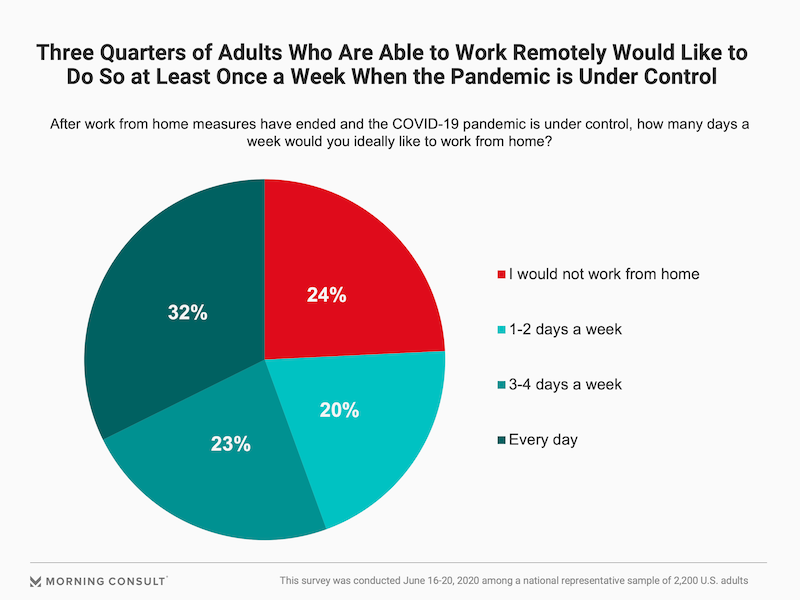
And it makes sense why. There’s plenty of upside, from eliminating commute time to increased productivity to health benefits. But there’s also plenty of downside, from blurred boundaries between work and personal life, a feeling of disconnectedness from fellow coworkers, to loneliness. So a balance of both makes sense going forward.

But why does it have to be one or the other? We tend to think of it as either/or: Work (as it’s traditionally been, at the office) versus Work From Home (WFH). What about a third option? Work From Anywhere (WFA)!
The simple truth, though, is that not everyone can WFH or WFA. In fact, a September 2019 report from The Bureau of Labor Statistics puts that figure at less than 30%, and disproportionately affects Black and Hispanic workers.
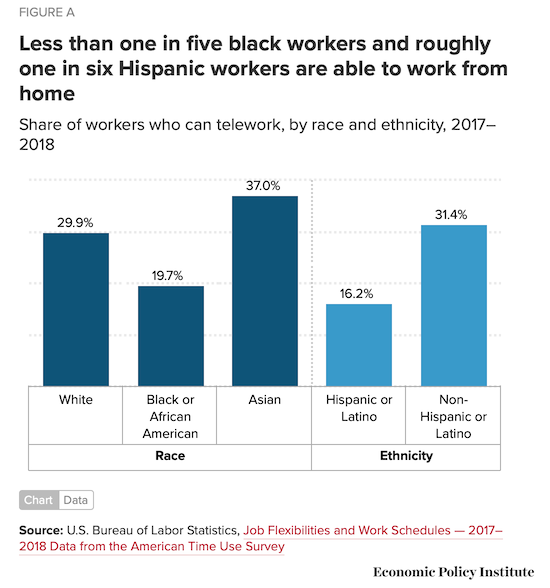 So WFH is both an either/or…
So WFH is both an either/or…
- either you can or you can’t.
…and it’s much more than that:
- workers who can do it prefer to rotate office/home/anywhere, with no one single place winning out from day to day.
Where do we go from here, and what will things look like in the years to come?
Workers now have greater geographic freedom, and appear to be fleeing traditional hubs for smaller markets. San Francisco has seen rents drop by 9% in May and 12% in June YoY, with rents in smallers metros like Providence, RI and Sacramento, CA up by 5%.
Rents in New York City have remained essentially static YoY, but nearly 25% of StreetEasy rental listings in May 2020 were discounted, and those discounts were ~60% higher from the previous year.
If those trends continue, just think of the cascading effects:
-
Fewer residents in cities mean there will be fewer customers for local businesses (some of which employ workers who hold those jobs that can’t WFH/WFA),
-
Fewer customers means less income for those businesses,
-
And less business income means:
-
Less hours for those workers,
-
Potentially less job availability,
-
And perhaps even less businesses in general to service customers who WFH/WFA (those who choose to keep living in major metros)
Where we are working is changing- for some- with the potential to reshape the lives of those fortunate enough to be able to WFH/WFA, as well as those individuals and communities who rely on them for survival.